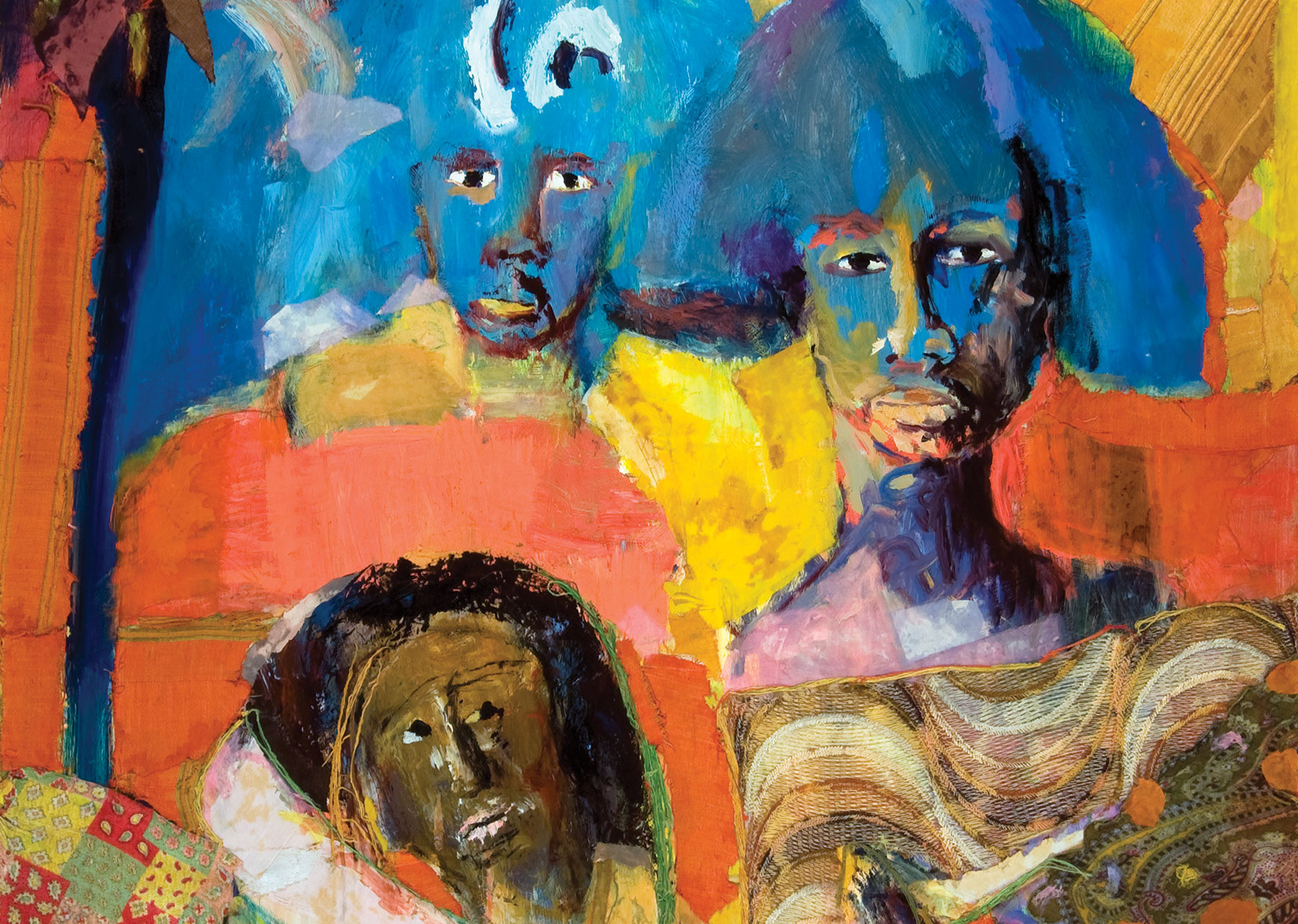In February 1971, the newly formed Delaware organization, Aesthetic Dynamics, Inc., presented its first major undertaking: the exhibition of over 130 works of art—drawings, prints, photographs, paintings, and sculptures—by 66 African American artists. Numerous factors led to artist Percy Ricks’ founding of Aesthetic Dynamics and their ambitious inaugural exhibition, most notably the trauma suffered from the 1968 assassination of Martin Luther King, Jr. and the subsequent nine-month National Guard occupation of Wilmington and Ricks’ desire to emphasize the influence of African American artists in Wilmington.
Now, on the eve of its 50th anniversary, Aesthetic Dynamics, Inc., the Delaware Art Museum, and current cultural leaders from Wilmington institutions are returning to this conversation with a restaging of the 1971 exhibition. Afro-American Images 1971, which will be on view at the Museum from March to June, 2021, will include most of the over 130 original works of art exhibited in the 1971 show at the Wilmington Armory (the space used by the National Guard in 1968).
Many of the works of art for the 2021 exhibition are being borrowed from museum collections, while others will be lent by individuals and artist estates. By trying to rehang the show as accurately as possible, the partnering organizations hope to examine the exhibition’s role in the Black Arts Movements 50 years ago, as well as question why was this seemingly successful event was neglected by historians in the decades that followed.
“Through this restaging, we are combatting historical amnesia and doing everything that we can to ensure that the archival record is as complete as possible,” says Margaret Winslow, the Museum’s Curator of Contemporary Art. “With the 2021 presentation of Afro-American Images, we have a remarkable opportunity to look back at how Wilmington played a role in the Black Arts Movement. What were the reasons for Ricks’ exhibition then and what stories does it tell today? Why was the Delaware Art Museum not an active partner with Aesthetic Dynamics in 1971? Today, the Delaware Art Museum seeks to bring art into the lives of the community in ways that support myriad interests and involves authentic civic engagement. Restaging the original exhibition, 50 years later, addresses numerous historic gaps such as the biased archival record and lack of local institutional support. By collaborating with Aesthetic Dynamics members 50 years later the Delaware Art Museum is afforded the opportunity to investigate its engagement with the Black community. As we certainly see in the Museum’s own renewed focus on acquiring work specifically of women and artists of color, this is still such an important aspect of the curatorial work that we do at this museum.”
In an effort to accurately represent and fully involve all voices in its gallery spaces, the Museum—in addition to partnering with current institutional leaders—is seeking community members with memories of the 1971 exhibition or particular research interests in the restaging. Interested parties are encouraged to connect with Margaret Winslow at mwinslow@delart.org or 302-351-8539.
Helping coordinate the exhibition and its presentation are members of an exhibition Advisory Committee co-led by Arnold S. Hurtt, who has served as an officer of Aesthetic Dynamics since the organization’s inception in 1971, and Dr. James E. Newton, Emeritus Professor of Africana Studies at the University of Delaware and the director of the Black American Studies program for over two decades.
“Percy Ricks served as a major advocate for the arts in general, in particular for African American artists,” says Dr. Newton. “His legacy continues with this historic exhibition.”
Hurtt agrees with the importance of preserving and promoting Ricks’ legacy: “Percy was an artist, educator, and advocate,” says Hurtt. “He saw the soul in creative expression and believed art links to humanities and culture.”
About the Delaware Art Museum
For over 100 years, the Museum has served as a primary arts and cultural institution in Delaware. It is alive with experiences, discoveries, and activities to connect people with art and with each other. Originally created in 1912 to honor the renowned illustrator and Wilmington-native, Howard Pyle, the Museum’s collection has grown to over 12,000 works of art in our building and sculpture garden. Also recognized for British Pre-Raphaelite art, the Museum is home to the largest and most important Pre-Raphaelite collection outside of the United Kingdom and a growing collection of significant contemporary art.
Under the leadership of our Board of Trustees, the Delaware Art Museum is implementing a comprehensive approach to community and civic engagement. This exciting new strategic direction requires that we increase our value and relevance to all audiences. Visit delart.org to for the latest exhibitions, programs, and performances or connect with us via social media.


